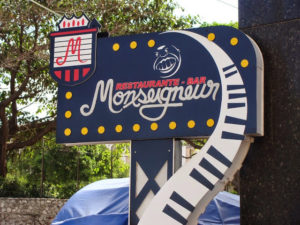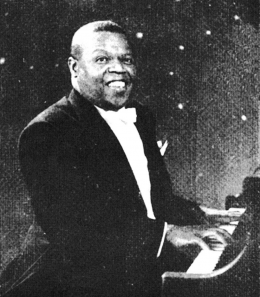 RECUERDOS DE BOLA DE NIEVE, UN ARTISTA QUE SE CASÓ CON LA MÚSICA CUBANA.
RECUERDOS DE BOLA DE NIEVE, UN ARTISTA QUE SE CASÓ CON LA MÚSICA CUBANA.
“No se puede hacer más con una canción”, decía el dramaturgo español Jacinto Benavente de Ignacio Villa, ese popular artista cubano que fue conocido solo por su nombre artistico de ‘Bola de Nieve’.
Pero la descripción más inmensa fue la del inmenso Pablo Neruda:
“Bola de Nieve se casó con la música y vive con ella en esa intimidad llena de pianos y cascabeles, tirándose por la cabeza los teclados del cielo. ¡Viva su alegría terrestre!¡Salud a su corazón sonoro!” Bueno esto solo podía haberlo escrito Neruda.
Se trata sin duda de uno de los más geniales músicos que ha dado la isla caribeña, un genuino y popular icono de la idiosincrasia cubana.
Todos estos comentarios acerca de Ignacio Villa ‘Bola de Nieve’ (todo lo contrario a lo bien prieto que era), apodo que entonces le disgustaba, a los doce años empezó estudios de solfeo y teoría de la música. Ya mayor matriculó en la Escuela Normal para Maestros.
Por los años treinta del siglo pasado se destacó como pianista acompañante, y por indisposición de Rita Montaner a quien acompañaba en el piano, el presentador lo anunció como ‘Bola de Nieve’ y a partir de entonces América empezó a rendirse ante su ángel.
Después de exitosas giras, Ignacio Villa regresó a Cuba en 1935, bajo contrato exclusivo de Ernesto Lecuona. Con el Maestro se presentó en prestigiosos escenarios de toda América y España y Estados Unidos. En este último lugar el periódico The New York Times lo calificó como una verdadera revelación por su personalidad artística. La radio, el teatro y el cabaret eran sus plazas preferidas.
Le compararon con Maurice Chevaliér y Nat King Cole. En el famoso Carnegie Hall recibió una de las grandes emociones de su vida al recibir una ovación que no se acababa, interminable. En los años 50 conquistó Francia, Dinamarca, Niza, Roma, Venecia y Milán. Volvió a México, su segunda patria y allí compartió con figuras como Pedro Vargas, Toña la Negra y Agustín Lara. Por esa época conoció a Edith Piaf, quien dijo: “Nadie canta “La vida en rosa” como Bola de Nieve.
El Bola había definido y perfeccionado su estilo de decir la canción. Para él no existía la improvisación: estudiaba y maduraba cada tema. Dominaba la canción caricaturesca, la de inalterable elaboración y la de inflexiones folclóricas de cualquier país. Como recursos expresivos utilizaba por igual la melodía, el ritmo y el mensaje de los textos.
Bola de Nieve recreaba canciones en inglés (Be careful, it´s my heart), en francés (La vie en rose) italiano, catalán y portugués; se atrevía con viejos romances españoles como El caballero de Olmedo y aportaba también sus propias composiciones: Si me pudieras querer, No dejes que te olvide o ese ¡Ay, amor!; y mención aparte de su inigualable versión de “la Flor de la Canela” de Chabuca Granda, la cual la autora alababa.
Bola de Nieve fue un ferviente admirador del regimen de los hermanos Castro y murió en la Capital Mexicana cuando se disponia a visitar al Perú en una actuación artistica un 2 ee Octubre de 1971. Tenia 60 años.
 MEMORIES OF BOLA DE NIEVE, AN ARTIST WHO WAS MARRIED TO CUBAN MUSIC.
MEMORIES OF BOLA DE NIEVE, AN ARTIST WHO WAS MARRIED TO CUBAN MUSIC.
“You can’t do more with a song,” said Spanish playwright Jacinto Benavente of Ignacio Villa, that popular Cuban artist who was known only by his stage name ‘Bola de Nieve’.
But the most immense description was that of the immense Pablo Neruda:
“Bola de Nieve married music and lives with her in that intimacy full of pianos and jingle bells, throwing their heads at the keyboards of heaven. Long live their earthly joy! Hail to your sonorous heart!” Well, this could only have been written by Neruda.
He is undoubtedly one of the most brilliant musicians that the Caribbean island has given, a genuine and popular icon of Cuban idiosyncrasy.
All these comments about Ignacio Villa ‘Bola de Nieve’ (quite the opposite of how well he was), a nickname that he did not like at the time, at the age of twelve he began to study music theory and music theory. When he was older he enrolled in the Normal School for Teachers.
By the thirties of the last century he stood out as an accompanying pianist, and due to the indisposition of Rita Montaner, who he was accompanying on the piano, the presenter announced him as ‘Snowball’ and from then on America began to surrender to her angel.
After successful tours, Ignacio Villa returned to Cuba in 1935, under the exclusive contract of Ernesto Lecuona. With the Maestro he performed on prestigious stages throughout America and Spain and the United States. In the latter place, the newspaper The New York Times described him as a true revelation for his artistic personality. The radio, the theater, and the cabaret were his favorite places.
They compared him to Maurice Chevaliér and Nat King Cole. At the famous Carnegie Hall, he received one of the great emotions of his life when he received an endless ovation. In the 1950s, it conquered France, Denmark, Nice, Rome, Venice, and Milan. He returned to Mexico, his second homeland and there he shared with figures such as Pedro Vargas, Toña la Negra, and Agustín Lara. Around that time he met Edith Piaf, who said: “No one sings” Life in Pink “like Bola de Nieve.
https://youtu.be/e31jFwkX78k
El Bola had defined and perfected his style of saying the song. Improvisation did not exist for him: he studied and matured each theme. He dominated the cartoonish song, that of unalterable elaboration and that of folk inflections of any country. As expressive resources, he used the melody, rhythm, and message of the texts alike.
Bola de Nieve recreated songs in English (Be careful, it´s my heart), in French (La vie en rose) Italian, Catalan, and Portuguese; he dared with old Spanish romances like El caballero de Olmedo and also contributed his own compositions: If you could love me, Don’t let me forget you or that Ay, love !; and a separate mention of her unique version of “La Flor de la Canela” by Chabuca Granda, which the author praised.
Bola de Nieve was a fervent admirer of the Castro brothers’ regime and died in the Mexican Capital when he was preparing to visit Peru in an artistic performance on October 2, 1971. He was 60 years old.
Agencies/ Wiki/ Carlos Rodriguez/ Internet Photos/ YouTube/ Arnoldo Varona/ www.TheCubanHistory.com
THE CUBAN HISTORY, HOLLYWOOD.










